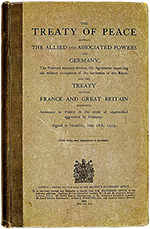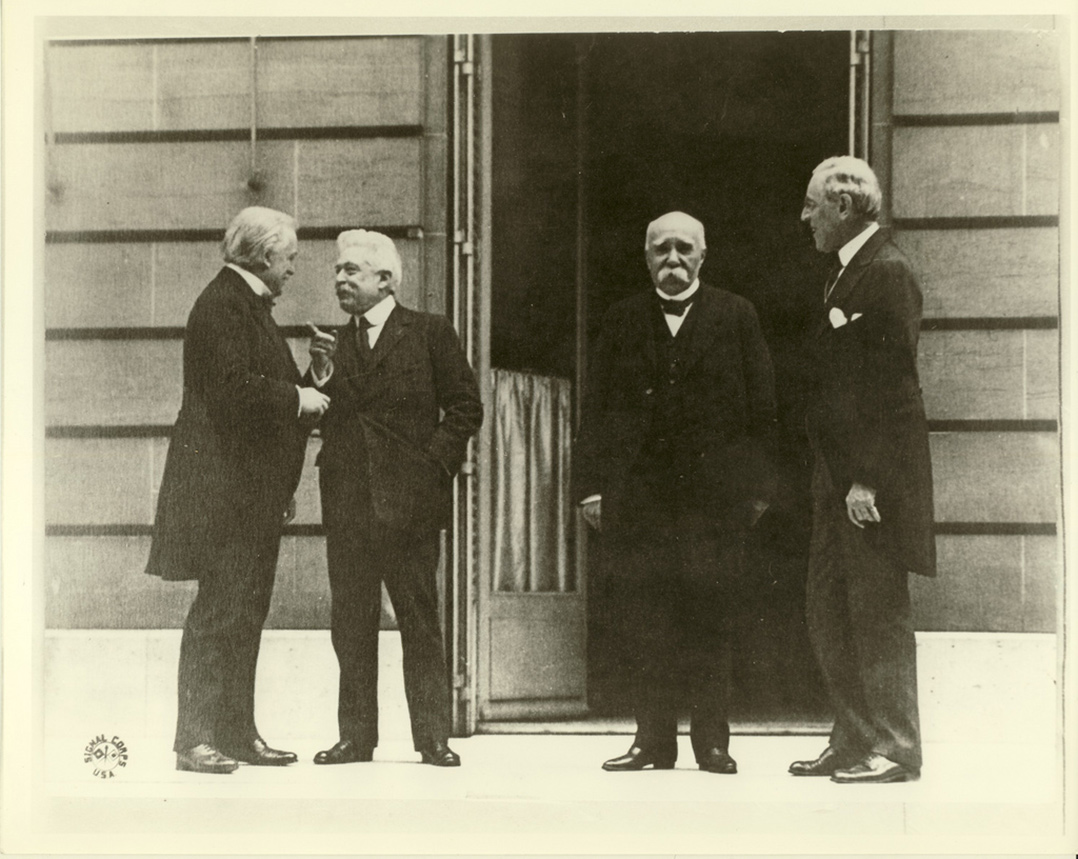WW1 Armistice Exhibition - The Treaty Of Versailles
The treaty of versailles
 The terms of the Treaty were not agreed at Versailles they were drawn up over numerous meetings at the Quai d’Orsay (the French Foreign Office) in Paris over the previous months. There had been six months of negotiations at the Paris Peace Conference after the signing of the Armistice, the meeting in Versailles on 28th June 1919 was the formal signing.
The terms of the Treaty were not agreed at Versailles they were drawn up over numerous meetings at the Quai d’Orsay (the French Foreign Office) in Paris over the previous months. There had been six months of negotiations at the Paris Peace Conference after the signing of the Armistice, the meeting in Versailles on 28th June 1919 was the formal signing.
The Treaty of Versailles only related to Germany the other Central Powers signed four separate Treaties each named after a Paris suburb.
Severe restrictions were placed on the scale of Germany's
military capability:
- the size of the German Army was restricted to 100,000 and conscription abolished
- no German Military Air force was permitted, and the Germany Navy was heavily restricted
- the Rhineland had to be de-militarised and fortifications east of the Rhine demolished
- the manufacture of chemical weapons, armoured cars, tanks and military aircraft was forbidden
THE PARTICIPANTS
The principal participants in setting up the terms of the Treaty were:
- David Lloyd George - British Prime Minister
- Georges Clemenceau - President of France
- Woodrow Wilson - President of the United States
- Vittorio Orlando - Prime Minister of Italy

70 delegates from 27 different nations took part in the initial negotiations in the Quai d'Orsay.
Neither Germany nor any of its Allies were represented at, or took part in, the negotiations.
There was no participant from Russia as they had already signed the Treaty of Brest-Litovsk with the Central Powers on 3rd March 1918.
Other pages in this section:
After The War - Early Battlefield Tours - The Khaki Election - The Treaty Of Versailles - Frittenden War Memorial
- copyright © 2025
- Site by lancefrench.com